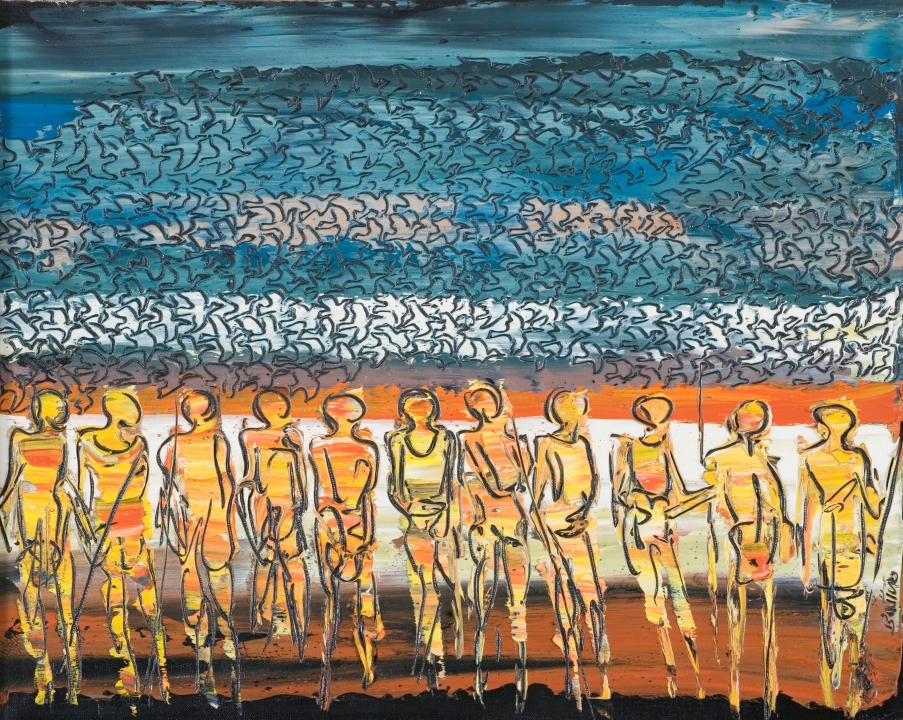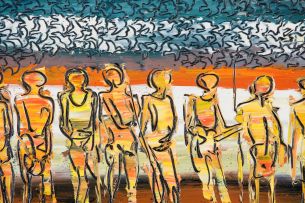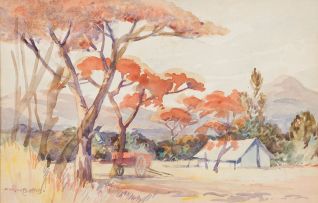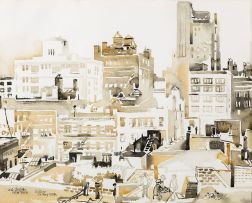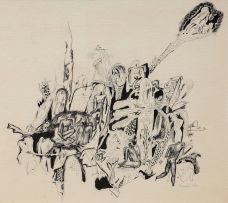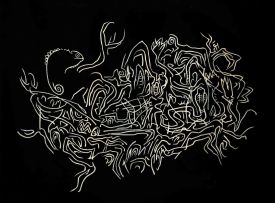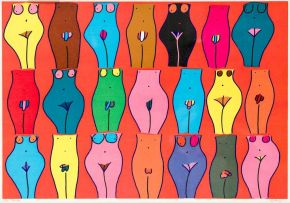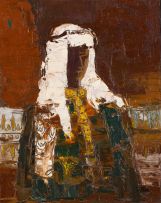Important South African and International Art and Books
Live Auction, 11 June 2012
Evening Sale
Incl. Buyer's Premium & VAT
About this Item
signed
Notes
In her refreshingly forthright way, Marion Arnold describes Walter Battiss as "a man who looked at life and art with curiosity, with delight and with few preconceptions. He sought ways of giving his visual experiences a new identity as art". 1 She outlines Battiss' perception of painting as both an intuitive and intellectual process that begins with a sensory apprehension and is followed by a logical analysis of the image's construction and implications.
In drawing attention to the physical language of painting which the artist employed to convey both a life force and sensuality through paint, Arnold reminds us that for Battiss, an oil painting was rarely a perceptual tool to create an illusion of the world but rather a two-dimensional picture plane on which to develop ideas.
As a scholar and respected amateur archaeologist, Battiss studied, documented and published his findings on rock art. Their influence on the development of his paintings is evident here both in his emphasis on two-dimensionality and on the linear rhythms of the composition. Using a palette knife and the creamy viscosity of oil paint to emulate the surface of the rocks, he has laid down colour and texture into which the fluid movement of figures and the flocks of birds in flight are inscribed with rapid graphic marks.
1 Marion Arnold 'Confronting Paintings' in Karin Skawran and Michael Macnamara, Walter Battiss, AD Donker, 1985, page 55.
